Online Resources for Planning a Health Curriculum
Two years ago, I finally did it. I threw away (or recycled, actually) the stacks of textbooks that have been collecting dust on my shelves for years.
I’m not sure why I didn’t do it sooner. Textbooks are often outdated and health is a subject with a constantly changing curriculum. It’s best to first find out what the student health concerns are in the community, and then find supporting materials online.
It can be overwhelming to sift through all of the resources out there, so I use Twitter to help me streamline my news feed, and subscribe to the blogs that I know will consistently deliver good information.
Here are a few that have helped me keep my health curriculum up-to-date.
NY Times Well: Covering a wide-range of topics and written by a team of experts, this blog is full of breaking health news, tips for healthy living, and the latest in research and studies.
The Atlantic Health: Dr. James Hamblin writes the health column for The Atlantic, and his fresh take on things is insightful and often very funny. His video series “If Our Bodies Could Talk” takes a humorous look at current health trends, and his Twitter feed was named one of the best of 2014 by Time Magazine.
NPR Shots: The health column from the NPR blog is an excellent resource. It’s updated frequently, and delivers the latest with a balance of focus on physical, mental and emotional health. They do quite a bit of reporting on the health of kids and teens, and I like sharing these articles with my students when they’re doing health research, because it gives them the option of listening to the story or reading it instead.
Choices Magazine: This might seem like an obvious one, since you’re reading this post on their blog, but Choices is a valuable resource for any health teacher. They tackle real issues that kids are facing today, and put a lot of thought into the stories that they choose by getting feedback from both teacher and student advisory boards. They update their blog often, and are active on Twitter, so if you follow them, you can stay caught up with the latest.
The Greater Good Science Center from UC Berkeley: This has been an extremely useful resource for me over the last few years as I’ve incorporated mindfulness into my classroom. They’ve got the latest on social and emotional health, and their site for educators is full of resources and research to help any school or teacher that’s shifting towards a focus on educating the whole child.
Their focus is on the science of what makes a meaningful life, and their new website Greater Good In Action, is full of active, research based practices to help improve health and happiness that could easily be used in the classroom.
Common Sense Media: Subscribe to this blog! I can’t say enough about this site as a resource for teachers, students and their parents. It covers all things digital, including screen time, cyberbullying, and media literacy.
So much great stuff out there… this is just the tip of the iceberg, but can help you stay in the loop. Which, in our age of information, is key when it comes to getting buy-in from the kids. Happy planning!






